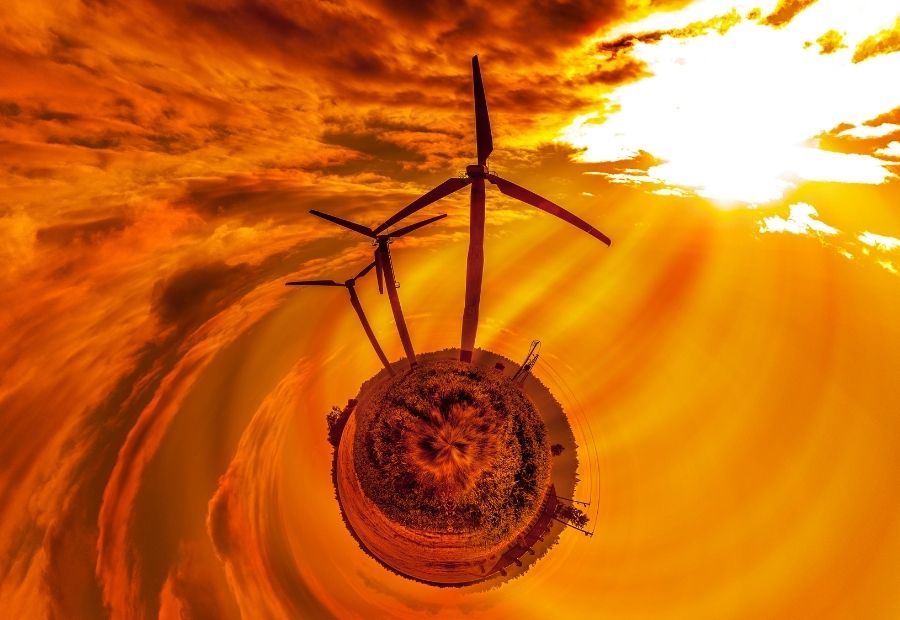This Article on Globalization & It’s Impacts on Agriculture : An Analysis; is written by Ishita Agrawal from Mody University of Science and Technology.
How are the effects of globalization reflected in Domestic Agriculture? It’s not a new phenomenon.
Globalization mostly refers to the capital, commodities, ideas and people across different parts of the world. Farmers faced many new developments after 1990 and; agriculture plays an important role in economic development; and also make agriculture successful in India.
Table of Contents
Introduction
Globalization refers to people for better jobs and education. It’s an invention of McDonalds, iPhone, all because of globalizations; and it’s a driven through the cultural, financial and political that ultimately promote; and often expanded amongst countries. Globalization has the economic sample of the country; and have an impact of globalization is visible on the social front of the country. Now a days, employers give better salaries to recruit the high-quality expertise; and because of globalization, Indian economy has gained balance and trust. Now it’s been recognized as an economic power of the world.
Globalization defined as increasing in connections; and interdependence of countries and peoples, according to WHO.
There are two interrelated elements:
- Opening of international borders for fast flow of goods and services, peoples, finances and ideas, and
- Changes in policies and institutions at international and national level that promote or facilitates such flows.
Example of globalization is English is a global language. So that Chinese can understand the language of Indians and vice-a-versa with the help of the English. Due to moving things one place to another, globalization can damage the environment and there is extinction of minority languages.
It might be an ordinary phenomenon. The idea of globalization was very shattered before the discovery of the technological revolution and internet. Now a days people aim to work in Japan, England, America or the advanced international locations as of the size and reach of multinational companies internationally; and companies like Unilever, Coca-Cola are true companies which have a footprint in every country on the earth.
Global challenge
Automobile, radio, plane, television, water supply and distribution, electrification, electronics, air situation, telephony, highways, refrigerator, computers, spacecraft, imaging, internet, health technologies, family appliances, over the last century, tremendous innovations and inventions have converted many lives around the world. No inventions could be viable without scientists, engineers, mathematicians and technologists working together. It needs to be collaboration globally on worldwide challenges; and create the innovations with the intention to make our lives better in the twenty first century. It has barriers that can hamper a team development, they are; Trust issues, language and communication differences, cultural differences and work style differences.
Effect of Globalization in Domestic Agriculture
History of Global Disturbances on Indian Agriculture
Pre – Independence Period
European buyers came to India in the nineteenth century at that time also Indian species had been exported to countries of the arena and south India’s farmers had been advocated to develop those plants. It isn’t a new phenomenon and it turned into there at the time of colonization. It is one of the crucial objects of export from India till now. In the end cotton became exported to Britain as a row cloth for his/her fabric industries because cotton belts from India attracted the British during the British duration. In Manchester and Liverpool, cotton fabric industry flourished due to availability of properly fine of cotton from India.
Post – Independence Era
The Champaran movement started in Bihar in 1917, farmers of that vicinity have been forced to develop indigo on their land as it changed for the fabric industries in Britain. They had not been able to develop food grains to preserve their households. Under this after 1990, the farmers in India uncovered to new demanding situations.
A critical producer of cotton, rice, jute, tea, spices and expresso, our vegetable is unable to combat with the developed countries as of highly subsidized agriculture in those countries. Green revolution did wonders when to make agriculture hit in India. It desires to given to small and marginal farmers situations and now it came in below controversies that due to high chemical usage, land degradation came about. Nowadays, the key-word is Gene evolution.
Advancements in Agriculture & Technology
Genetic engineering is as a powerful complement in inventing new hybrid sorts of engineering. Its in vogue as it is made without manufacturing facility made chemicals like fertilizers, pesticides, and insecticides but it doesn’t affect the surroundings in negative way. Indian farmers have to change their cropping style from cereals to high-cost vegetation. This will reduce environmental degradation and grow earnings simultaneously.
Flora, medicinal herbs, green plants like jojoba and jatropha wishes a good deal less irrigation than rice and sugar cane. India’s several climates may be harnessed to grow an extensive variety of excessive-price plants.
1990’s Indian agriculture was self-sufficient and it changed into approximately 20%. Globalization has thrown open Indian market in the works. Without any difficulties, Indian product can easily export to internationally; and agricultural products can be exported to India. Indian farmers are dealing with a huge challenge from global competitions.
Present Condition of Indian Agriculture
In this era, we are targeting at commercial and services quarter development, mostly of large company corporations. It’s a method of which nearby societies, economies and tradition have emerged as incorporated through networks of change; and conversation. Impact of globalization of our economy should be appeared into in time periods. Increases of price of India’s GDP multiplied from a mean of five. In 90’s 6% to 7.5% in 2003-4; and in the second section, its around 7%. In the very first phase, we did not now the aware of any setback to different sectoral improvement; but more emphasis became given to sectors that spoke back to globalization; and in second phase, terrible effect of globalization.
Reasons for the low agriculture are low funding, low seed, imbalance in fertilizer use, a distorted incentive system. By using global and policies, economic improvement has been motivated. Globalization has been pushed the Indian financial system to excessive boom rate, however vulnerable sustainability. In the second one, globalization contributed to the decline of agriculture and manufacturing. Farmers are dealing with a debt trap of a vicious circle and farmer’s suicides. Due to no financial savings amongst rural groups for other charges with marriage and healthcare together, etc.
Negative Impact of globalization
Captured the Indian markets by multinational companies (MNCs) and making farmers dependent on excessive yield seeds and fertilizers. Farmers moving from traditional or blended cropping to unsustainable cropping practices; this leads to the attraction of a worldwide marketplace. Inexpensive imports driven down the costs of plants from the oppositions like wheat, cotton and making agriculture unsustainable for several farmers.
Conclusion
Agriculture plays an important role in the financial system. Agriculture employees 60% of the Indian population and contributes 20.6% of GDP. In 1991, adopted globalization, agriculture of Indian growth charge increases; and also globalization doesn’t have positive touch at the agriculture regions and it is continually inclined to import sugars, food grains/products and so on, every time there is an increase in rate of those commodities. Government never pays more to the farmers for extra meals grains rather it resorts to imports. On the other side, the price of manufacturing is growing and subsides are declining.
Disclaimer: The opinions and views in the articles and research papers published on this website; are personal and independent opinions of the author. The website is not responsible for them.
Legal Thirst has created a telegram group for exchanging legal knowledge, Events, and various opportunities.
You can click on this link and join:
Follow Legal Thirst on Instagram and Subscribe to our YouTube channel for more amazing legal content.



